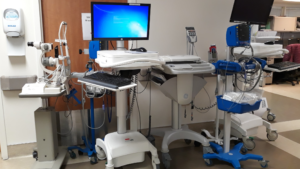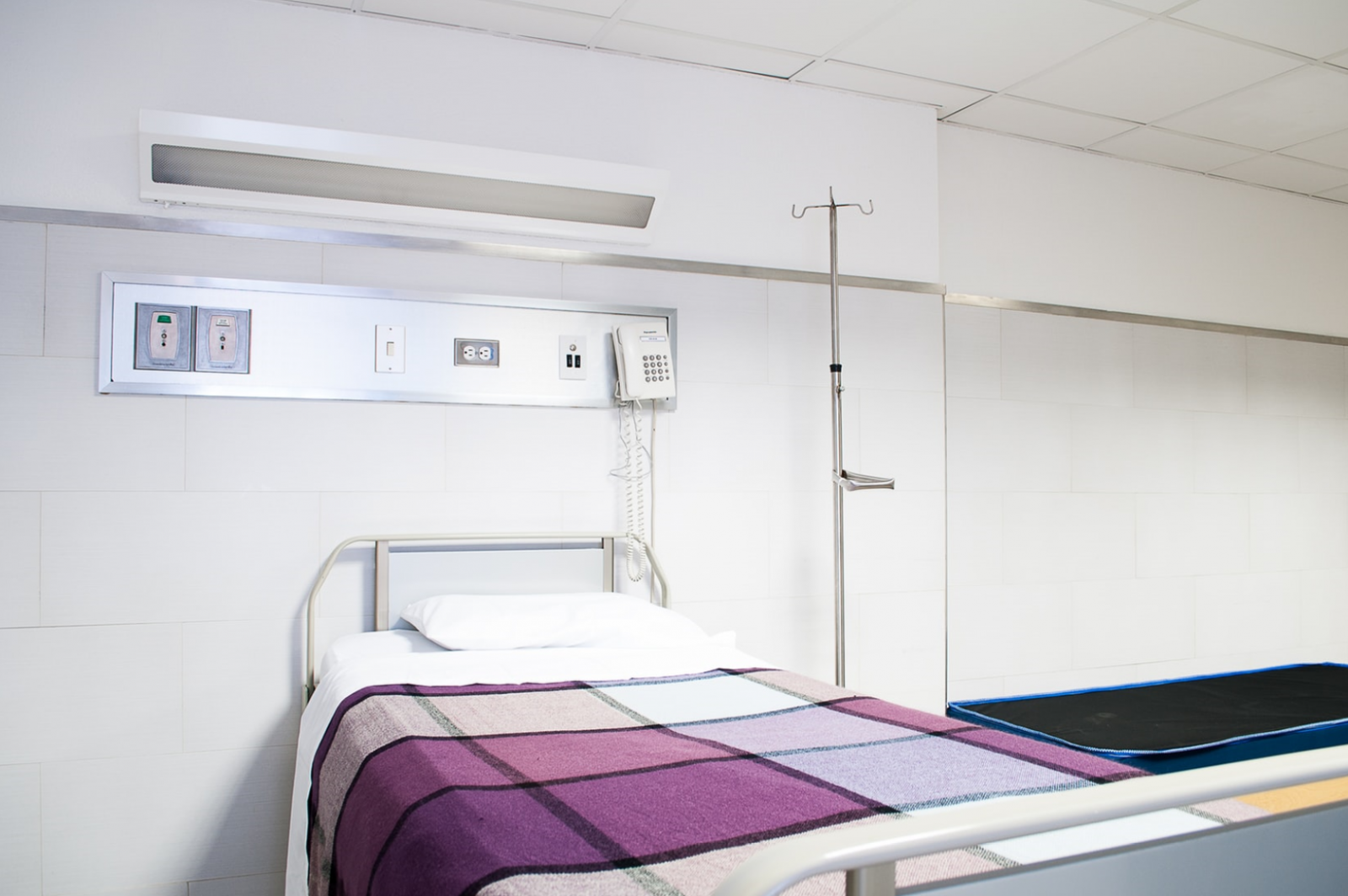
IoT in Healthcare: Smart Beds

Thanks to technology and the growing innovation of IoT devices, the hospital bed has been reimagined. New smart beds monitor up to 35 data points, including a patient’s weight, body temperature, movement, and heartbeat. The beds will electronically update a patient’s medical record with all data, including how many times the patient left their bed and how often they’ve been turned in bed. Some smart beds even include verbal alerts that can be triggered, such as, “Please don’t get up,” and USB ports for patients to charge their mobile devices.
When used in acute care or long-term care facilities, these smart beds help medical teams continuously monitor patients’ health in a non-invasive way. They increase patients’ safety by automatically transferring all data in real-time over the wireless network, allowing medical teams to instantly review and monitor patients’ vitals. In addition, alerts are sent if there are any sudden changes in a patient’s health or movement (i.e. if a patient tries to get out of bed when they shouldn’t), enabling medical personnel to intervene before patient health deteriorates. In one study, the use of heart rate and respiratory rate sensing technology in smart beds reduced the rate of code blue events by 86%, and resulted in a 45% reduction in the average stay of ICU patients transferred from the medical-surgical unit.
Smart beds definitely seem to be a worthwhile investment, but there are a few necessary steps to walk through before adding them to your hospital or care facility. These beds rely on a robust wireless network infrastructure. Without one, medical professionals can’t depend on the smart beds to gather and transmit life-saving patient data. To ensure your network is in optimal health, work with an AI-powered Wi-Fi optimization platform that delivers:
Complete Network Visibility
Wi-Fi networks are dynamic ecosystems. They consist of the entire RF environment, connected devices, and front-end and back-end infrastructure. This ecosystem is always changing as devices connect and disconnect, network tests are run, and upgrades are made. In many hospitals, the challenges are increased by interference from medical devices, even non-Wi-Fi ones such as microwave ovens, or building infrastructure sensors such as temperature controls. Many older buildings were not designed with Wi-Fi in mind and it takes continuous analysis to ensure the network is working as desired.
The only way to know if the network is optimized and reliable is with 100% network visibility. Look for an AI-powered platform that automatically analyzes data from the entire network ecosystem, 24/7. This is necessary if you want to be confident that your network is accurately reporting the data gathered from your smart beds and other health technology.
Remote Network Tests
IT teams are not always located onsite. To prevent IT from having to travel to run tests and troubleshoot issues, work with an optimization platform that will run network tests remotely. This delivers three main benefits:
- Running tests on a scheduled, continuous basis enables IT to work proactively to ensure network health is optimized, and reduces the chances of a “surprise” causing issues that could degrade the network and interrupt the successful monitoring of patients’ health.
- Remote troubleshooting enables IT to resolve problems faster by eliminating travel time.
- Remote access allows IT to resolve problems from any location, rather than requiring them to set-up shop in locations such as busy hallways or care-centered rooms.
Historical Analytics
Wi-Fi-network infrastructure is usually designed to last 3-5 years. When it is time to upgrade, you want to know exactly how the network has changed over that time, and what digital experience a future network needs to support. To get the answers you need, work with a Wi-Fi optimization platform that automatically saves historical data. Pulling that data will let you easily see how to best optimize the network cost-efficiently.
Top-Notch Security
Digital security is a key concern. Patients’ private information must be kept private, which means minimizing any network vulnerabilities and mitigating the data security risk from all angles. One specific issue is the security of all client devices. All health technology, including smart beds, should operate on a closed network so that no one outside the facility can hack the technology and gain access to secure information.
To enhance network security, work with an AI-powered Wi-Fi optimization platform that offers client-side visibility and will automatically and proactively alert IT to security issues.
Conclusion
As healthcare facilities continue to increase their reliance on IoT and smart beds to better provide patient care, it becomes more critical that Wi-Fi network performance is maintained. Follow these tips to optimize your network and patient health.
Wyebot’s Wireless Intelligence Platform™ (WIP) is an award-winning, patented, AI-powered Wi-Fi optimization solution. Our vendor-agnostic platform reduces mean time to resolution by up to 90% and eliminates up to 80% of onsite troubleshooting visits. Contact us with any questions you have on network optimization, or request a demo or free trial to see WIP in action.
Wyebot is transforming how organizations optimize their business-critical Wi-Fi networks. Our AI-powered Wireless Intelligence Platform combines intelligent sensors and agents with cloud-based software to analyze Wi-Fi networks from the end-user perspective, automatically detecting both intermittent and critical issues, and proactively recommending solutions. Trusted by leading enterprises, healthcare organizations, and educational institutions worldwide, Wyebot’s vendor-agnostic platform reduces mean time to resolution by up to 90% and eliminates up to 80% of onsite troubleshooting visits. Headquartered in Massachusetts, Wyebot continues to set new standards in wireless network reliability.

